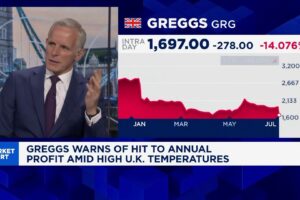
By completely erasing its February-March 2020 losses, the bull market appears to have secured a renewed lease on life. But it may be just a short-term lease.
I’m referring to what the Dow Jones Industrial Average DJIA, -0.64% did this week: close above its previous high from earlier this year, thereby completely recovering its February-March bear-market losses. While other major market averages had already completed their own recoveries in the summer, the Dow — the bluest of blue-chip averages — had stubbornly refused.
Until now. Some of the analysts I follow are making a big deal of this, arguing that the market after reaching this point usually continues for much longer and rises much further. I decided to put their argument to the test.
To do so, I focused on the bull- and bear market calendar maintained by Ned Davis Research. For each bull market since 1900, I undertook the following two-step process:
• I first identified the date on which the Dow closed at or above where it stood at the beginning of the immediately preceding bear market. This is the date on which the prior bear market’s losses had been completely overcome.
• I next identified the date of the subsequent bull market high in the Ned Davis calendar, and where the Dow stood on that date.
“ Once the Dow had completely recovered its prior bear market losses, it didn’t begin another bear market until 21 months later on average. ”
If you were to focus on the average result that emerged from my analysis, you’d be highly encouraged indeed. Once the Dow had completely recovered its prior bear market losses, it didn’t begin another bear market until 21 months later on average — 1.8 years. Over that nearly-two-year period, the Dow gained an average of 48%.
Accordingly, if the current bull market were to live up to this historical average, the next bear market wouldn’t begin until August 2022, at which point the Dow would be trading above 44,000. No wonder the bulls are making such a big deal of the Dow’s eclipsing its February high.
Unfortunately, there is less here than meets the eye — far less. That’s because there is a huge variation in the historical data — variability which is masked when we focus on the average. When I shared my results with market technician David Aronson, he said that “there isn’t much in these results to hang our hat on.” Aronson is author of the book Evidence-Based Technical Analysis and co-author (with Timothy Masters) of Statistically Sound Machine Learning for Algorithmic Trading of Financial Instruments.
To appreciate just how wide the variability is in the historical results, consider the shortest length of time between a past bear-market recovery point and a subsequent bull market high: 33 days, during which the Dow gained 0.9%. If the current bull market did the same, the next bear market would begin in mid-December with the Dow just over 30,200.
Might a more upbeat conclusion be reached if we focused on bear market recovery times that were extremely quick, like the one since March? Unfortunately no. There is no statistically significant correlation in the historical data between the speed of its bear-market recovery and how far and high the market goes subsequent to its recovery.
None of this diminishes the market’s impressive recovery over the past eight months. It’s understandable that such a rebound would put investors in a giddy mood. But my review of prior recoveries suggests that we temper our exuberance.
Mark Hulbert is a regular contributor to MarketWatch. His Hulbert Ratings tracks investment newsletters that pay a flat fee to be audited. He can be reached at [email protected]
More:These seven stocks have doubled in 2020 — and analysts say they have further to run
Also read: A stock-market pro offers 10 reasons the S&P 500 can surge another 7% before 2020 ends







